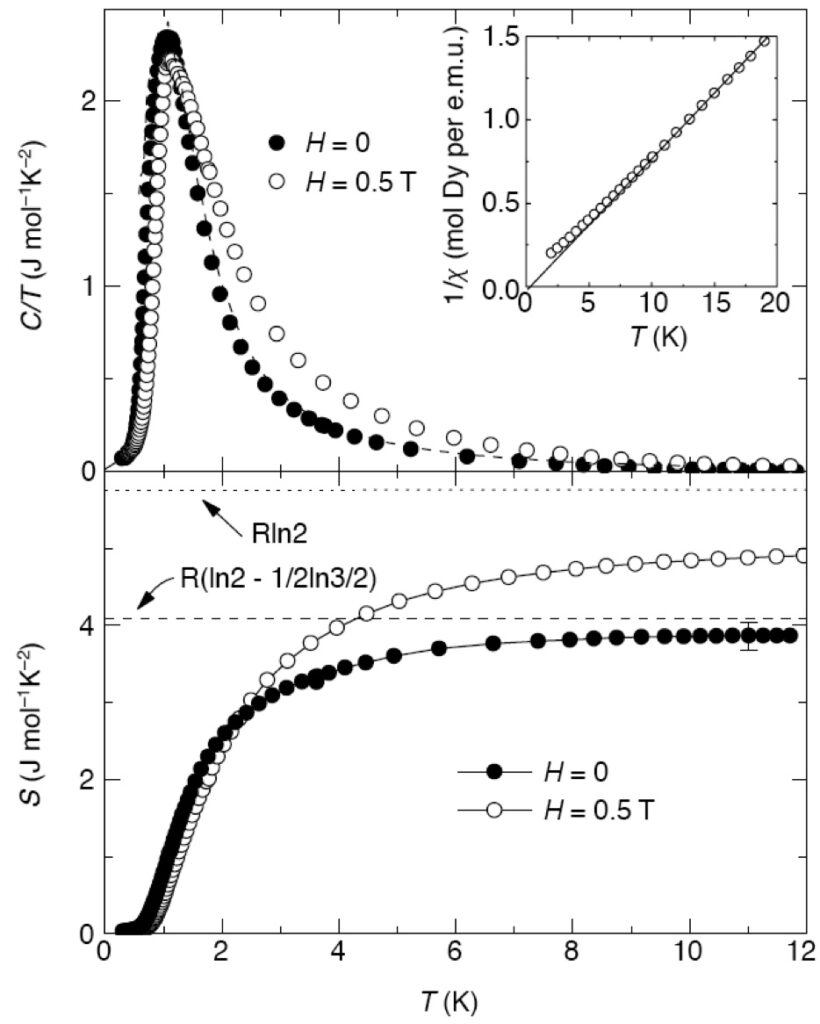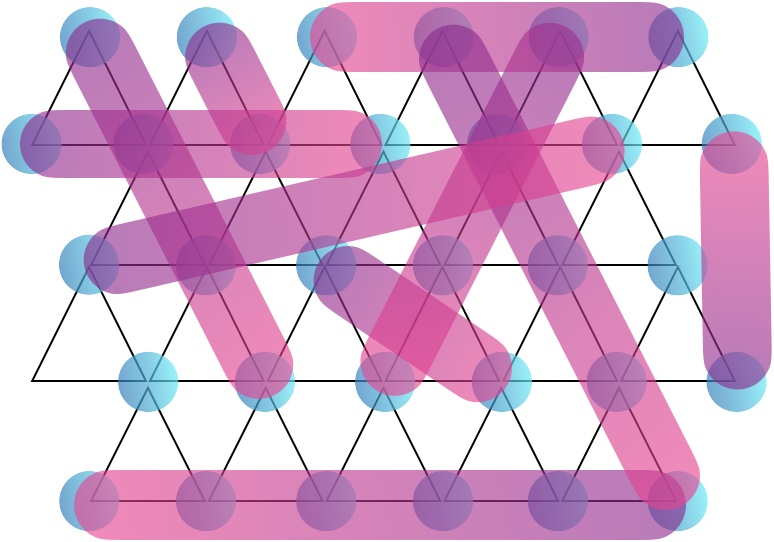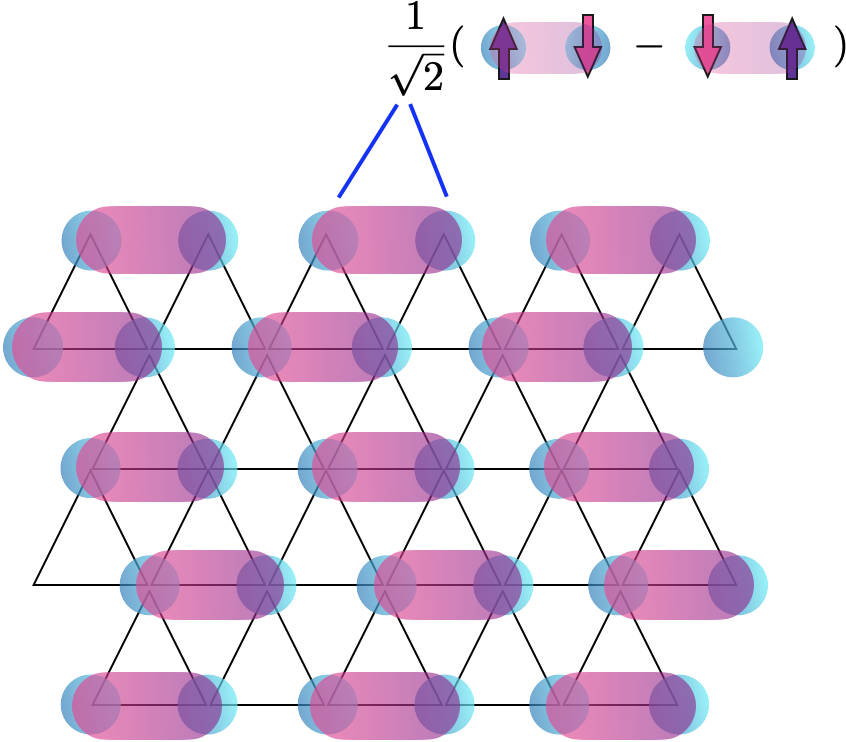Magnetic frustration

The study of frustration in magnetic systems goes back to the geometric problem that arises when one tries to place three spins with antiferromagnetic interactions on a triangle. The interaction between neighboring atoms favors an antiparallel alignment between any of two neighboring spins, which is a condition that is impossible to fulfill. As a result, in spite of the interaction, the spins remain in a fluctuating state down to the lowest temperatures. The best known example of such a system is the so-called spin ice state for magnetic atoms located on the corner sharing tetrahedrons in the pyrochlore structure.
Large entropy

These types of systems attracted a lot of attention when it was realized that they present a large residual entropy at zero temperatures. This entropy is the result of the many possible spin orientations which are permitted on such a lattice: To fulfill the antiferromagnetic interactions, two spins have to placed pointing into the tetrahedron and two spins are pointing out of the tetrahedron. This problem maps onto the problem of the position of the hydrogen atoms with respect to oxygen in the cubic phase of water ice (H2O), hence the name spin ice.
Quantum entanglement

Spin ice is one example of such a magnetic system, where fluctuations prevent long range order with a broken symmetry from establishing itself, even at absolute zero. Systems for which quantum mechanical fluctuations prevent the order are called quantum spin liquids (QSL). The characteristic distinction between QSLs and ordinary liquids is that the fluctuations in QSLs have long range power dependencies, whereas in ordinary liquids the correlations have a short correlation length, which decays exponentially. As a consequence, the spins in a QSL are quantum mechanically entangled over long distances. What makes these systems interesting to study is that they offer us the chance to search for new quantum mechanical ground states, with new quantum statistics.

 fr_FR
fr_FR